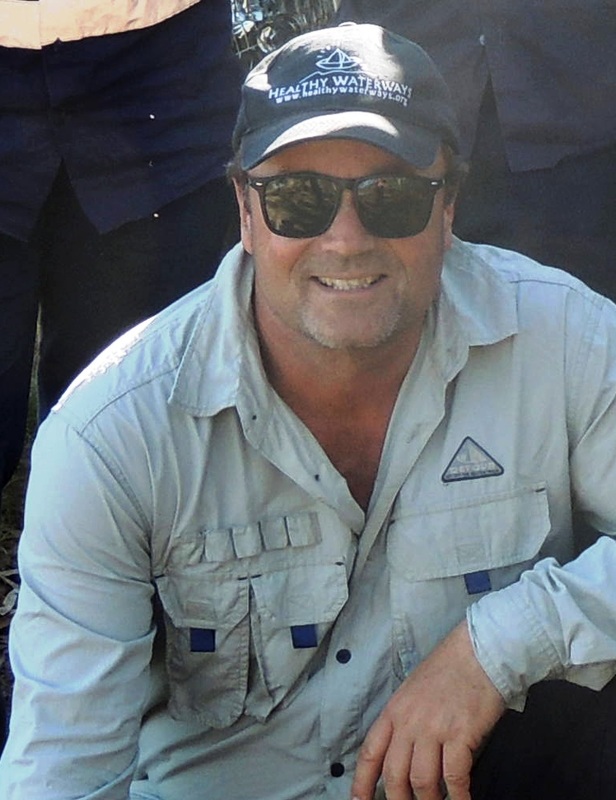When you think of Moreton Bay and mangroves and someone mentions crabs we often think of the Mud Crab or even the Sand Crab, which are important species for commercial and recreational fishers.
There are many other crabs associated with our wetlands and estuarine areas associated with Moreton Bay. They often play important ecological roles within the various habitats including many mangrove-lined creeks, saltmarsh areas, foreshore areas and even the deeper areas of Moreton Bay.
The saltmarsh areas are dominated by nocturnal crab, the Haswell’s Shore Crab. This abundant crab spends the daytime in deep borrows coming out at night to feed. They contribute to the ecology of the estuarine area by exposing the saltmarsh substrate to oxygen through their burrowing behaviour. They are also broadcast spawners, so with every spring tide they release millions of crab larvae into the water which are then fed upon by fish.
Saltmarsh and mangrove-lined creeks are inhabited by numerous species of crabs including the Fiddler Crab. They also burrow and churn over the sediment oxygenating the substrate. Research has discovered that mangrove forests struggle without the presence of these mini-bulldozers and their continual churning of the substrate.
In the intertidal flats, especially associated with sandy undeveloped areas like the islands there are numerous “battalions” of soldier crabs. Their impact through their burrowing action and churning over of the surface sediment filtering out morels of food has a big impact on the ecology of the flats again like other small crabs by aerating the sediments.
Even on our surf beaches associated with the Moreton Bay islands we find small crabs such as Ghost Crabs who deal with this harsh environment by digging deep burrows away from the tideline where they can have an impact on the dune vegetation. Crabs can also cope with rough surf zones where they live and feed amongst the waves. They often have spines and a compact shape to deal with the turbulence and to avoid being a meal for passing fish.
A number of crabs are important drivers of sediment aeration (also known as bioturbation) and they have a big impact on many of our habitat areas. They are feed on the sediment processing organic matter from leaf litter, detritus to small invertebrates. They often end up as part of the food chain with many fish and birds specialised to catch them. Importantly they are also fascinating creatures to observe as you can see by some of the photographs of some of our local crustacean stars!
There are many other crabs associated with our wetlands and estuarine areas associated with Moreton Bay. They often play important ecological roles within the various habitats including many mangrove-lined creeks, saltmarsh areas, foreshore areas and even the deeper areas of Moreton Bay.
The saltmarsh areas are dominated by nocturnal crab, the Haswell’s Shore Crab. This abundant crab spends the daytime in deep borrows coming out at night to feed. They contribute to the ecology of the estuarine area by exposing the saltmarsh substrate to oxygen through their burrowing behaviour. They are also broadcast spawners, so with every spring tide they release millions of crab larvae into the water which are then fed upon by fish.
Saltmarsh and mangrove-lined creeks are inhabited by numerous species of crabs including the Fiddler Crab. They also burrow and churn over the sediment oxygenating the substrate. Research has discovered that mangrove forests struggle without the presence of these mini-bulldozers and their continual churning of the substrate.
In the intertidal flats, especially associated with sandy undeveloped areas like the islands there are numerous “battalions” of soldier crabs. Their impact through their burrowing action and churning over of the surface sediment filtering out morels of food has a big impact on the ecology of the flats again like other small crabs by aerating the sediments.
Even on our surf beaches associated with the Moreton Bay islands we find small crabs such as Ghost Crabs who deal with this harsh environment by digging deep burrows away from the tideline where they can have an impact on the dune vegetation. Crabs can also cope with rough surf zones where they live and feed amongst the waves. They often have spines and a compact shape to deal with the turbulence and to avoid being a meal for passing fish.
A number of crabs are important drivers of sediment aeration (also known as bioturbation) and they have a big impact on many of our habitat areas. They are feed on the sediment processing organic matter from leaf litter, detritus to small invertebrates. They often end up as part of the food chain with many fish and birds specialised to catch them. Importantly they are also fascinating creatures to observe as you can see by some of the photographs of some of our local crustacean stars!

 RSS Feed
RSS Feed
